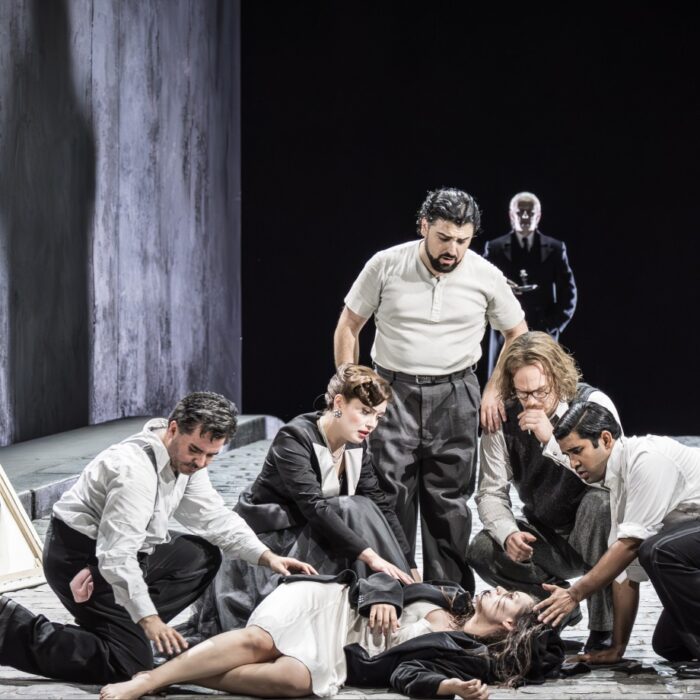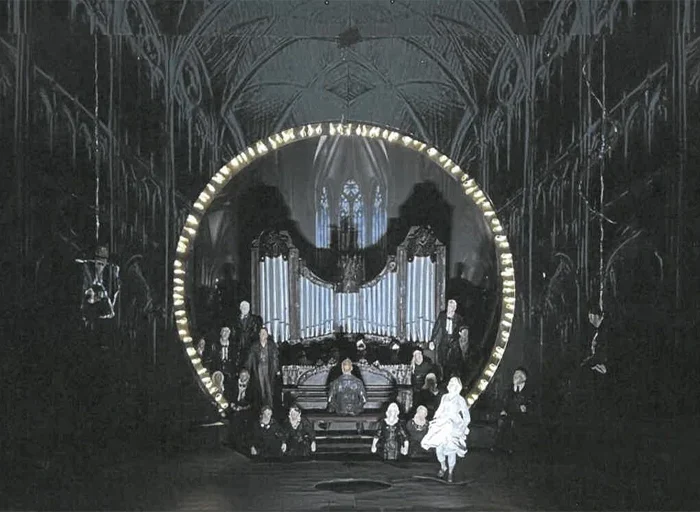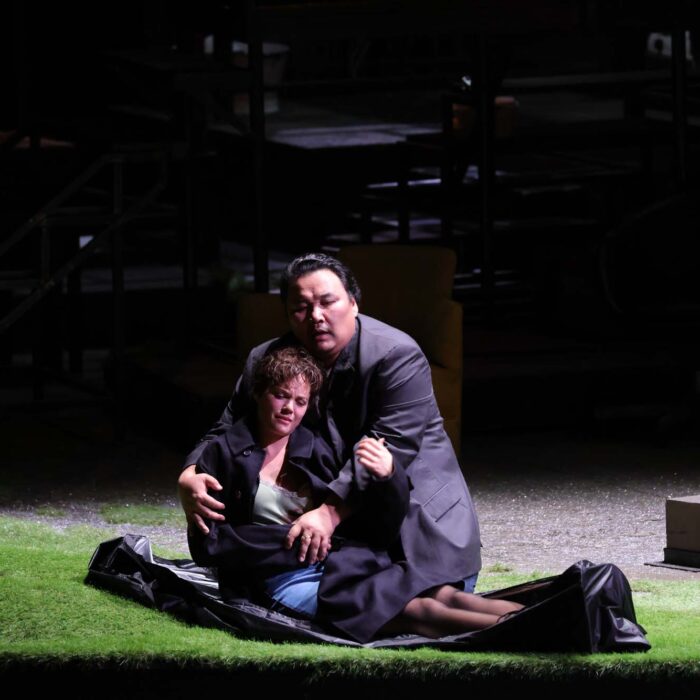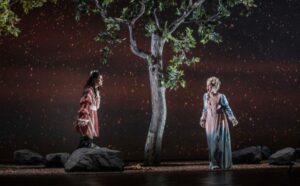
Opéra National de Lorraine 2025 Review: Orlando
By Andréas Rey(Photo:© Jean-Louis Fernandez)
Handel’s opera seria “Orlando” took place at the Nancy Opera House from October 3 to 9, in co-production with the Théâtre du Chatelet, the Théâtre de Caen, and the Grand Théâtre in Luxembourg, where it will be performed on November 16 and 17.
This production would have been almost perfect, if… But let’s see…
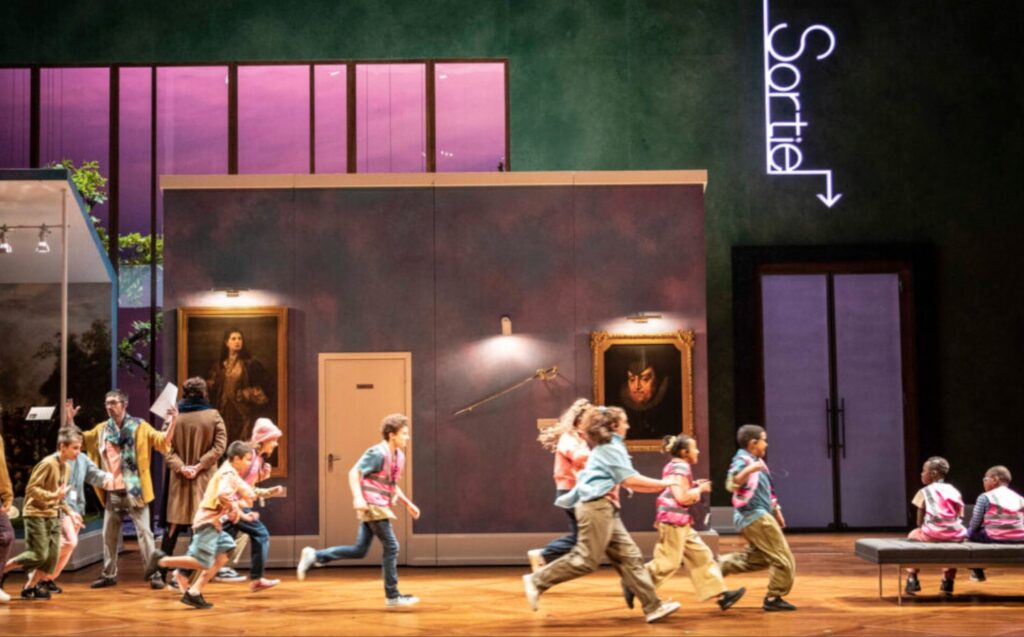
(Photo:© Jean-Louis Fernandez)
Production Details
The sets are truly beautiful, starting with the first act, which shows a museum where schoolchildren play, run around, and discover the portraits around them, before the guard Zaroastro calms them down with magic. They continue to be beautiful when Orlando goes to hell, in a scene reminiscent of Yves Tanguy’s landscapes, with a dark pink background verging on purple, in front of a few rocks and trees. And his living pictures, from which Angelica, Merolo, and Dorinda emerge—Orlando literally steps out of his portrait—are reminiscent of the pastoral paintings of François Boucher and Fragonard, and even, why not, Greuze. Cécile Trémolières‘ set design is truly worthy of praise.
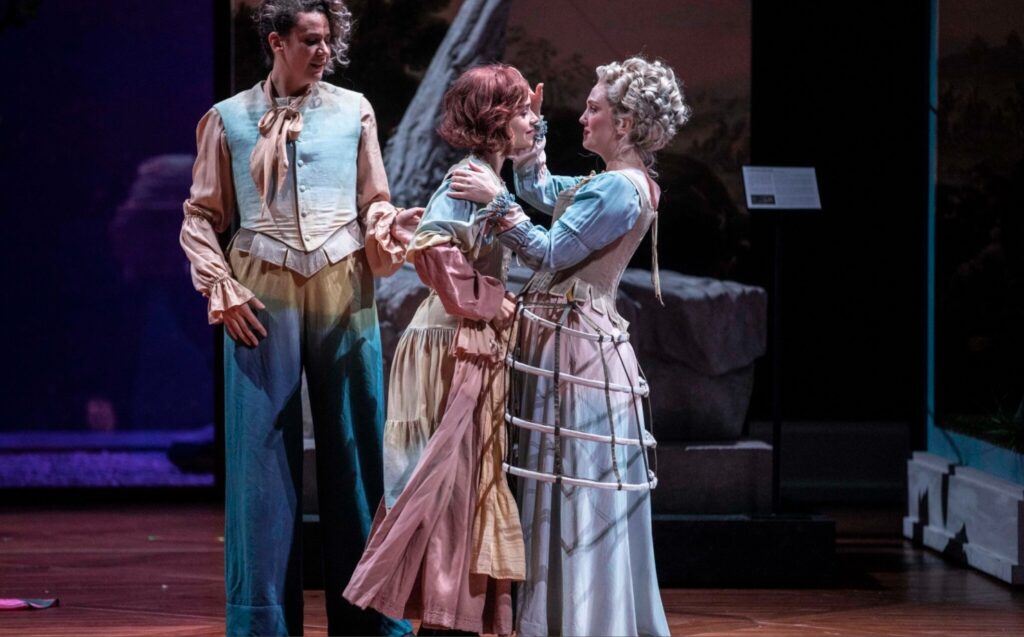
(Photo:© Jean-Louis Fernandez)
Alex Costantino‘s costumes seem surreal. From Orlando’s gentleman’s costume in the modern museum, to those of children dressed as demons, to Dorinda’s shepherdess costume in the museum and Angelina’s 18th century noblewoman costume in rainbow colors, their style and elegance never ceased to amaze.
Music & Cast Highlights
The praise must continue with the Nancy-Lorraine National Opera Orchestra conducted by Christophe Rousset. Rousset already left an excellent impression when he conducted Mozart’s “Mitridate” at the Théâtre des Champs-Elysées, with a sharp, piercing, and incisive orchestra exposing bare naked the characters’ psyches. He conducts an opulent, round, and baroque orchestra, with which he sets the musical path, so to speak, for the opera. And then there is the quality of the singers, all of whom have perfect diction, enabling them to be understood and heard clearly above the orchestra pit. With them, the transitions from recitatives to arias are almost natural and seamless. Whether it be the Orlando of mezzo, Noa Beinart, with her deep but supple voice, from her first “Non fu già men forte Alcide” to her last “Già l’ebbro mio ciglio,” or the Medoro of Rose Naggar-Tremblay, who already played Farnase in “Mitridate” at the Théâtre des Champs-Élysées, with a deeper timbre but without heaviness, from her “Se il cor mai ti dirà” to her “Vorrei poterti amar.”
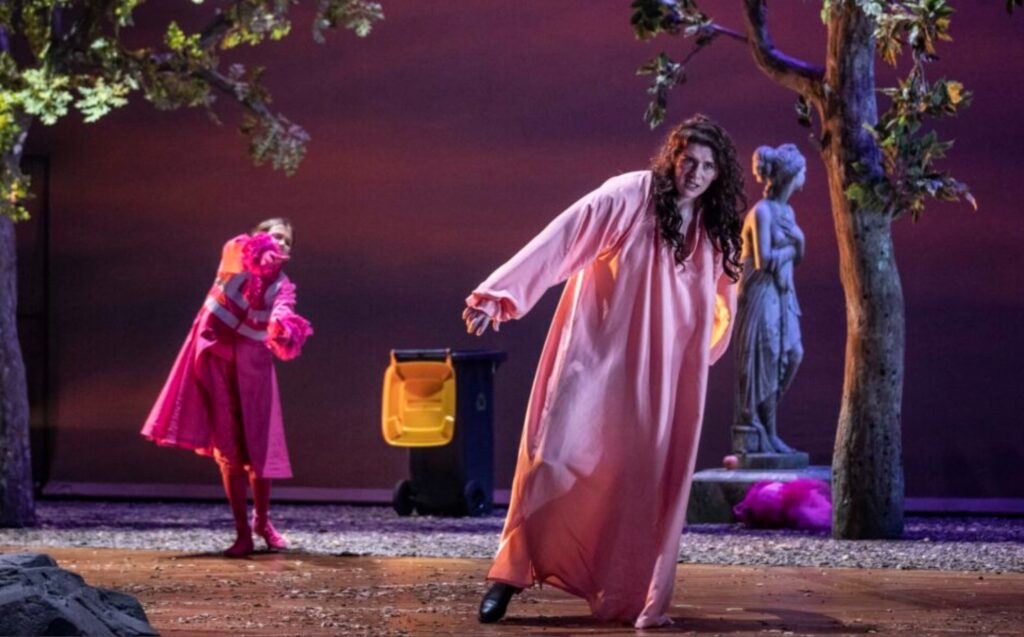
(Photo:© Jean-Louis Fernandez)
The Angelica of soprano Mélissa Petit, with her fresh charm, although weighed down by the gravity of her character, tending towards naturalness from her “Chi possessore è del mio core” to her “Così giusta è questa speme.” Soprano Michèle Bréant as Dorinda, with a slightly deeper timbre, but no less pleasant from her “Ho un certo rossore” to her “Amor è qual vento,” her vocal fabric seems like a noble tapestry, deep and velvety from start to finish. All their voices blended and layered perfectly in each duet, such as those of Angelica and Medoro, or Dorinda with Orlando, in their clarity. Only the Zoroastro of bass Olivier Gourdy betrays their lack of depth, with recitatives that are too close to the arias. The greatest quality of these musicians is their ability to reveal the musical material that Mozart would refine to create his operas.
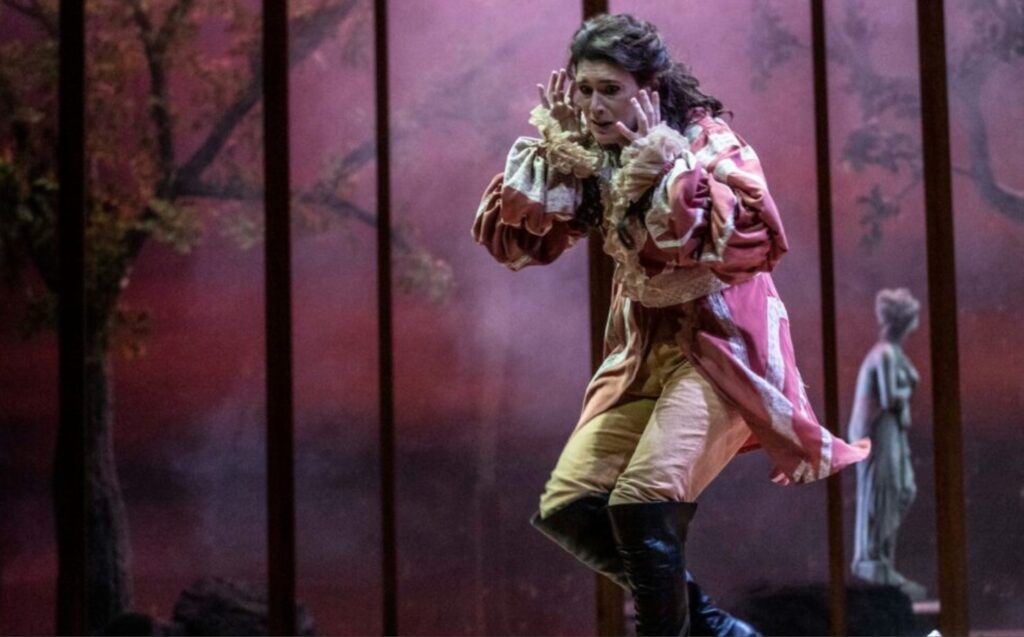
(Photo:© Jean-Louis Fernandez)
A little more passion and commitment in the acting would nevertheless have given this drama more depth. But that is not the worst of it. The main problem facing the audience here is the superimposition of another story—that of the children locked in the museum at night watching the story of Orlando—onto the libretto. The protagonists’ stage performance often becomes boring, obscure, and unrelated to the libretto. Thus, the children, who remain silent during the opera, dance as in the time of Louis the XIV, eventually take revenge on Zoroastro, and are reunited with their parents, without the audience really understanding the connection with Orlando’s madness. This marriage of two stories that have nothing to do with each other becomes increasingly burdensome as the opera progresses. A spectacle for the eyes and ears, but not necessarily a film, as a cinephile would say.
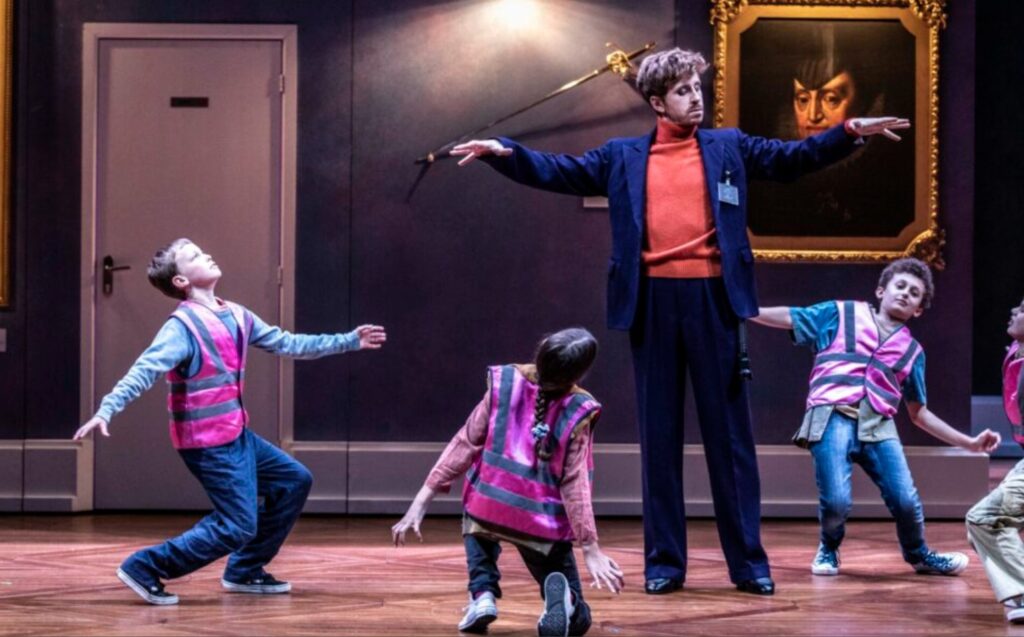
(Photo:© Jean-Louis Fernandez)

